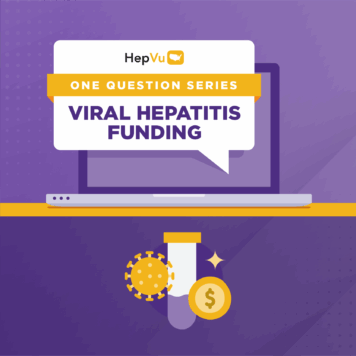Tatyana Kushner, MD, MSCE is an Associate Professor in the Division of Gastroenterology and Hepatology at Weill Cornell Medicine, with joint appointments in Obstetrics & Gynecology and Population Health Sciences. She specializes in liver disease in women, particularly viral hepatitis during pregnancy, and leads the Women’s Liver Health Program. Her research focuses on hepatitis screening, treatment access, and maternal-fetal outcomes, and she serves on the AASLD/IDSA national Hepatitis C guideline committee.
Q: Can you tell us about your background and how you became involved in researching and treating viral hepatitis, particularly in women’s health?
I am a hepatologist, and my joint appointment in obstetrics and gynecology reflects my interest in the intersection of liver disease and women’s health, especially during pregnancy.
I first became interested in viral hepatitis during my training, around the time direct-acting antivirals for Hepatitis C were being approved. Before then, there were no highly effective treatments for hepatitis C. Seeing how these medications could cure Hepatitis C and transform the lives of people living with HCV was inspiring, and I still consider it one of modern medicine’s greatest achievements. It was one of the reasons I chose hepatology for my career moving forward
Aside from HCV, I also care for patients with Hepatitis B and delta. Practicing in New York means working with a diverse population, where these infections are relatively common. Hepatitis B during pregnancy is particularly important because of the potentially high risk of vertical transmission, i.e., transmission of the virus from mother to baby, and the importance of interventions in the perinatal period that can substantially decrease this risk. Across my career, I’ve seen that women with viral hepatitis have specific care needs across the reproductive life span—from pregnancy to menopause—that should be addressed in clinical practice and are important areas for clinical research, so that we can discover ways to improve outcomes in women living with viral hepatitis.
Q: How common is viral hepatitis among women in the U.S.? Are there notable disparities in screening or treatment?
Rates of Hepatitis C among women of childbearing age have risen in parallel with the opioid epidemic. Multiple studies have documented significant increases, including during pregnancy. Many times, routine prenatal care is when women are diagnosed for the first time with viral hepatitis, and therefore becomes an opportunity to link them to care and treatment.
While increased screening has helped identify more cases, stigma remains a major barrier, and women may experience it differently—and more intensely—than men. Stigma can discourage women from seeking harm reduction services, pursuing screening, or following up with treatment. In pregnancy, the problem is compounded: people are less likely to disclose risk factors, making it harder to create safe environments for honest conversations and timely testing.
Q: What unique challenges do women face when it comes to hepatitis diagnosis and treatment?
Many women are primary caregivers, balancing childcare, work, and family responsibilities. This can delay or prevent them from prioritizing their own health, including the time and commitment required for Hepatitis C treatment.
Insurance coverage is another barrier. Some women have insurance during pregnancy but lose it afterward, making treatment inaccessible. Social determinants of health affect everyone, but these pressures can be more acute for women, creating more hurdles to getting diagnosed, linked to care, and treated.
Q: How does pregnancy intersect with Hepatitis B and C? What are the risks for mother and baby?
Universal screening for both Hepatitis B and C during pregnancy is now recommended, regardless of risk factors. For Hepatitis B, triple panel testing (i.e., hepatitis B surface antigen, hepatitis B surface antibody, and total antibody to hepatitis B core antigen) is advised, creating opportunities to vaccinate those who are not immune and to counsel patients about prior exposure.
Hepatitis B carries a high risk of vertical transmission—up to 90% without intervention—but protocols such as neonatal immunization and maternal antiviral treatment for high viral loads can reduce that risk to nearly zero.
Hepatitis C has a lower vertical transmission risk (around 9%), but there is currently no vaccine or proven method to prevent perinatal transmission. It’s important to counsel patients about the risk and plan follow-up care for infants if transmission occurs.
Both Hepatitis B and C are linked to adverse pregnancy outcomes. Hepatitis C is associated with intrahepatic cholestasis of pregnancy (i.e. lowered liver function during pregnancy resulting in a build-up of bile in the liver), preterm delivery, and postpartum hemorrhage; Hepatitis B is linked to conditions such as gestational diabetes.
Pregnancy can also be the first—and sometimes only—point of healthcare contact for many women with hepatitis. If they aren’t treated during pregnancy, it’s critical to ensure postpartum linkage to care so they aren’t lost to follow-up.
Q: What policy changes and research priorities would improve care for women with hepatitis?
We have strong screening guidelines, but many people still aren’t screened. Policy changes should focus on ensuring these recommendations are implemented consistently.
There’s a need for more research on Hepatitis C in pregnancy, particularly predictors of vertical transmission, viral load thresholds for increased risk, and optimal timing of treatment. Clinical trials—such as those studying direct-acting antivirals during pregnancy—are ongoing, but provider hesitancy remains high. Even with emerging safety and efficacy data, few providers currently offer treatment during pregnancy.
Policies should also address postpartum follow-up, as both Hepatitis B and C patients are often lost to care after delivery, only to be diagnosed again in subsequent pregnancies. Continuous, longitudinal care is essential, and we need policy in order to support the development of protocols and resources for care not only during pregnancy, but postpartum as well.
Q: Do treatment restrictions impact women’s ability to access care, particularly during pregnancy?
Yes. If women are diagnosed with HCV during pregnancy, there is not clear guidance on how to address HCV at the time. The AASLD/ IDSA guidance states that “Despite the lack of a recommendation, treatment can be considered during pregnancy on an individual basis after a patient-physician discussion about the potential risks and benefits.” As such, many providers are hesitant to offer treatment during pregnancy. The few providers who are indeed offering treatment of Hepatitis C during pregnancy may also encounter insurance barriers, such as delays in prior authorizations. These delays are especially problematic because treatment in pregnancy is time-sensitive (i.e., so that HCV treatment can be completed during pregnancy, prior to delivery). Although treatment in the postpartum period is the more common course of action, many patients are lost to follow-up postpartum and are challenging to re-engage after pregnancy delivery.
One promising study, the STORC trial, is evaluating the use of sofosbuvir-velpatasvir in the second and third trimesters in pregnant people. Interim results show high cure rates and fewer pregnancy complications, such as cholestasis, among treated patients. While the findings are encouraging, whether they will change provider behavior remains to be seen. A recent global survey found that despite emerging data, few obstetricians, hepatologists, or primary care providers are willing to treat Hepatitis C during pregnancy—highlighting the need for more education alongside policy and research advances.



